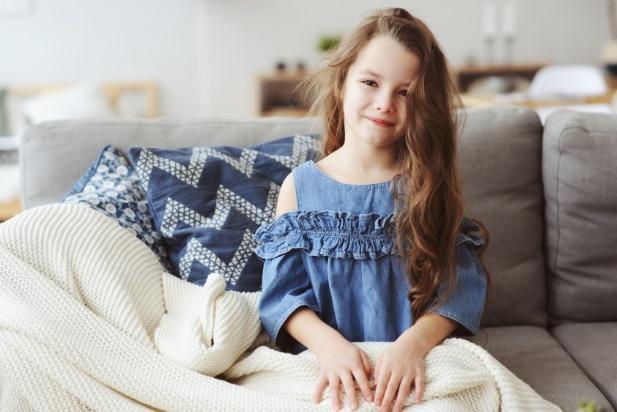For people who struggle with anxiety, insomnia or attention challenges, weighted blankets may provide a safe tool to help relieve the symptoms of anxiety. When combined with other lifestyle choices like proper nutrition, limited screen time before bed and mindfulness techniques, using a weighted blanket can be help empower your child to soothe their own anxiety.
What Is a Weighted Blanket?
Typically weighing four to 30 pounds, weighted blankets are heavier than the average comforter. They are often made from cotton because polyester and other synthetic fabrics can be too hot. Weighted blankets for kids should equal no more than 10 percent of their body weight plus 1 to 2 pounds.
How Do Weighted Blankets Work?
Weighted blankets are thought to ease symptoms of anxiety by pushing the body downward or “grounding” the body, which can have a calming effect. Studies show that grounding may reduce nighttime levels of cortisol, the stress hormone that elicits the fight or flight response in our bodies. Using a weighted blanket may also trigger the release of dopamine and serotonin, the feel-good hormones that fight stress, anxiety and depression, through deep pressure touch.
How to Make a DIY Weighted Blanket
You can cut costs by making your own at home. Keep in mind that weighted blankets are not recommended for infants and safety guidelines should be followed.
Craft Nectar offers these useful tips on how to make a weighted blanket for anxiety at home:
Ready to try Brillia?

- Gather poly pellets: 10 percent of your child’s weight plus 1 or 2 pounds
- Also, gather cotton or flannel (or both): size is up to you, although this blog follows a pattern for a 40 inches x 52 inches blanket divided into 4-inch squares
- Sew the front and back together, and stitch vertical channels 4 inches apart
- Using a postal scale, weigh each ounce of pellets in a small cup and put a tape marker at the fill line to fill the channels.
- After filling every channel, sew across horizontally, sealing the pellets into squares.
- Then fill and sew each row until completion.
Who Shouldn’t Use a Weighted Blanket?
Besides infants, those with chronic health conditions, circulation issues and temperature regulation issues should not use weighted blankets. If the weight causes your child to feel constricted and increases their anxiety, this tool may not be suitable for them. Consider complementing your management of anxiety and attention challenges with another safe and effective non-prescription remedy like Brillia, a homeopathic product that can help normalize neurotransmitter activity and help reduce the symptoms of anxiety through a holistic approach, which combines taking Brillia and making healthy lifestyle choices through our five pillars.






